
(Photo Credit PENNUTRITION https://twitter.com/pennutrition)
A new study by researchers at the University of British Columbia found that Canadian children are falling short on nutrition during the school day. The first of its kind, this study looked at 4,827 children across Canada between the ages of six and 17.
Using a 24 hour recall, their dietary intakes from 9 am to 2 pm was scored against a School Healthy Eating Index. The Index looks at 11 specific criteria based on Canada’s Food Guide’s recommendations, such as intake of vegetables and fruit, whole grains, milk products and meat and alternatives.
Here are the highlights from the research:
– 1/3 of daily calories (about 750 calories) are consumed at school; almost 25% of these calories came from “other foods” such as candy bars and salty packaged snacks
– Kids are falling short on vitamin A, vitamin D, calcium, magnesium, zinc, potassium and protein
– The lowest scores were for green and orange vegetables, whole fruit, whole grains and milk products
– The average score was 53.4 out of a possible 100 points
– Teens’ diets scored worse than that of younger kids aged six to eight
Nutrition is important for the brain as well as the body. As the school year is off to a start, we reviewed a research summary on diet, behaviour and learning in children. Here are our top 3 tips for unlocking food’s potential to support your child’s learning. The key areas of focus are the overall nutritional balance of regularly timed meals, and adequate intake of some essential nutrients, including omega-3 fatty acids.
- Mind the overall nutritional balance!
Enjoying a variety of foods help the body and the brain get what they need to function best. The brains and bodies of children need a regular supply of energy so that they can think effectively. Studies show that most children would benefit from more fruit and vegetables, and fewer sugary drinks, high-fat and high-sugar snacks. Although the brain prefers glucose (sugars) for energy, in the long run it doesn’t cope well with major swings in blood sugar. Emerging evidence shows that foods that are digested more slowly and provide long lasting energy may be better choices.
DIETITIAN’S TIP: To moderate blood sugar swings, choose whole grains more often, and balance carbohydrate intake with some protein in each meal.
- Eat regularly – especially breakfast.
When children go without food for too long they may lose concentration and / or they may get in a bad mood. Researchers find that eating breakfast leads to better learning compared to skipping breakfast. Encourage your kids to eat breakfast. Any breakfast or lunch meal is better than nothing, however including some fibre and protein in your child’s breakfast (and lunch) may be helpful for the brain.
DIETITIAN’S TIP: Try some of these great breakfast ideas:
- A boiled egg with wholegrain toast and sliced peppers or tomato
- Cooked oats or other whole grain cereal with milk and a sliced apple or banana
- Yogurt berry smoothie with nuts and seeds
- Eat a variety of foods to get key nutrient for the brain.
One of the most important areas of research into the relationship between foods and brain health focuses on oily fish that are rich in omega-3 fats. There is also some evidence that omega-3 fats help with attention. Iron, zinc and magnesium are also thought to be particularly important for the brain. Low iron levels are strongly linked to poor mood and concentration. Low magnesium may be linked to anxiety, and low zinc may lead to poor attention and poor sleep.
Oily fish is the best source of omega-3 fats. Red meat, poultry and pulses (beans, peas, lentils, chickpeas) are examples of good sources of iron and zinc. Green vegetables, nuts and seeds are all a good source of magnesium. For some children who are not getting enough, increasing their intake of foods containing one or more of these nutrients could make a difference to their mood, behaviour and learning. Talk to a dietitian if you’re concerned about these nutrients for your child.
DIETITIAN’S TIP: A varied and nutritious diet is the most reliable way to help your child’s developing brain and body get the nutrients it needs. Children (and adults) should eat two servings of fatty fish a week. Choose fish high in omega-3 fatty acids like salmon, mackerel, sardines or herring. Plant based sources of Omega-3 include enriched eggs, walnuts & flaxseeds.
Bottom line: Giving your child regular meals and a healthy, well-balanced diet helps their development, mental well-being and physical health. Your child might also benefit from reducing their intake of foods that are low in nutritional value. If you have questions, or for more information contact us or a Resisted Dietitian in your community. Factsheets on selected topics are also available on Dietitians of Canada website.
Reference: BDA The Association of UK Dietitians, Food Fact Sheet 2017. Source PENNUTRTITION.



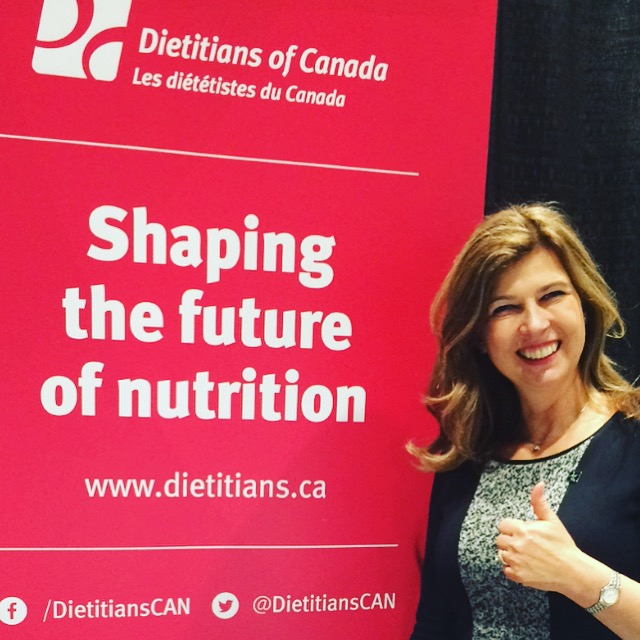
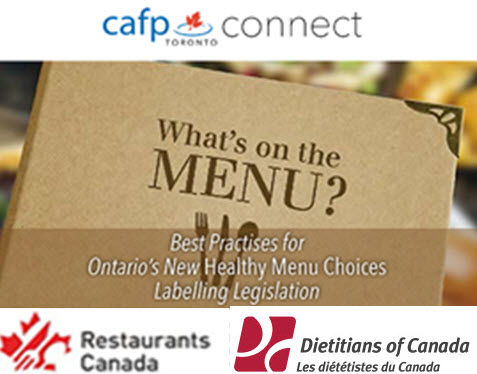

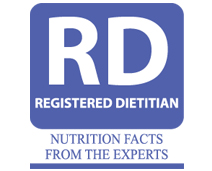

 45% of Canadians find it challenging to eat well at work. Here’s our advice for fighting the 3 o’clock brain drain.
45% of Canadians find it challenging to eat well at work. Here’s our advice for fighting the 3 o’clock brain drain.
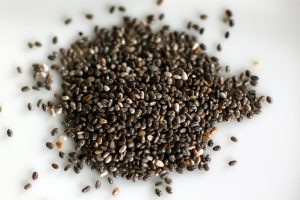
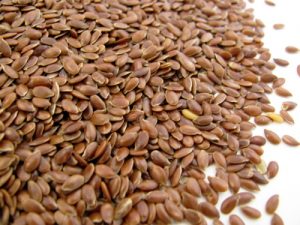
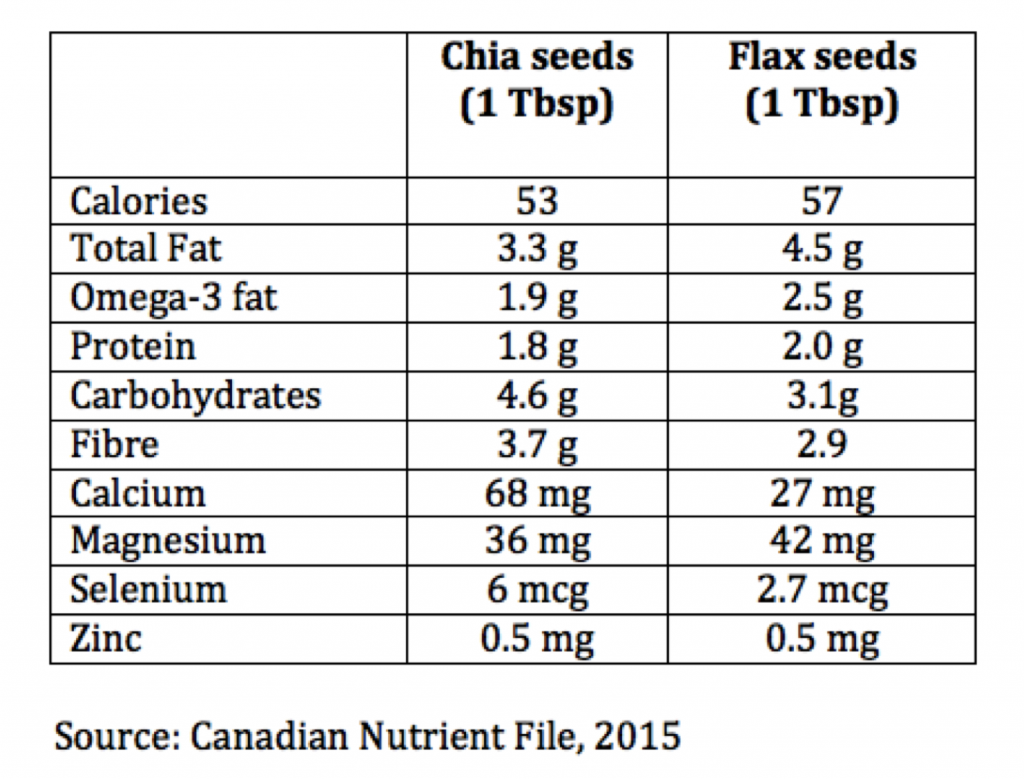
 Get this all star easy to follow Chia Seed Pudding recipe we love for breakfast! Make it the night before and boost it with your favourite fruit and nuts. Recipe adapted from The Food Network, courtesy of Giada De Laurentiis.
Get this all star easy to follow Chia Seed Pudding recipe we love for breakfast! Make it the night before and boost it with your favourite fruit and nuts. Recipe adapted from The Food Network, courtesy of Giada De Laurentiis. 

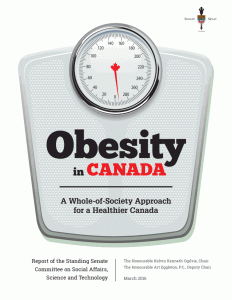


 ICYMI, Jamie Oliver was in Toronto to launch his new TV show on Food Network Canada and his new cookbook Everyday Super Food. We were there at the TV show prescreening and had a chance to listen to Jamie’s thoughts on his latest cookbook.
ICYMI, Jamie Oliver was in Toronto to launch his new TV show on Food Network Canada and his new cookbook Everyday Super Food. We were there at the TV show prescreening and had a chance to listen to Jamie’s thoughts on his latest cookbook.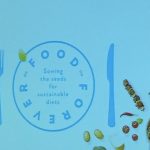
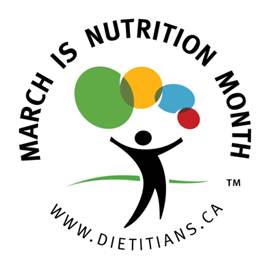 According to a poll by Ipsos Reid, 45% of Canadians say that eating healthy meals and snacks while at work is challenging. Are your 9 to 5 eating habits helping or hindering your productivity? Let us show you how healthy eating can boost your concentration, productivity and overall wellness.
According to a poll by Ipsos Reid, 45% of Canadians say that eating healthy meals and snacks while at work is challenging. Are your 9 to 5 eating habits helping or hindering your productivity? Let us show you how healthy eating can boost your concentration, productivity and overall wellness.
 Camelina Oil – Extracted from the Camelina sativa oilseed, camelina oil is about 90% unsaturated fat, with 39% omega-3 fat and 18% omega-6 fat. The oil boasts light, nutty and earthy notes. With a high smoke point of 475°F, camelina oil is versatile and can be used in salads, dips, dressings and marinades as well as cooking.
Camelina Oil – Extracted from the Camelina sativa oilseed, camelina oil is about 90% unsaturated fat, with 39% omega-3 fat and 18% omega-6 fat. The oil boasts light, nutty and earthy notes. With a high smoke point of 475°F, camelina oil is versatile and can be used in salads, dips, dressings and marinades as well as cooking.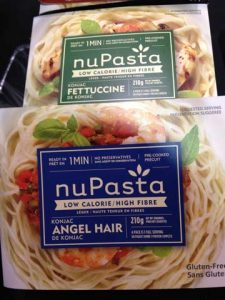 Nu Pasta – This gluten-free pasta is made from the konjac plant. It’s a type of tuber plant, which grows on slopes about 600 to 12,000 m above sea level. The root of the konjac plant is dried and milled into a fine flour which is the main ingredient of the pasta. A 210 g package contains: 25 calories, 1 g fat, 0 mg sodium, 6 g carbohydrates, o g sugar, 6 g fibre, and 1 g sugar. We sampled it in a stir-fry with garlic and pine nuts, which was a nice way to perk up the flavour.
Nu Pasta – This gluten-free pasta is made from the konjac plant. It’s a type of tuber plant, which grows on slopes about 600 to 12,000 m above sea level. The root of the konjac plant is dried and milled into a fine flour which is the main ingredient of the pasta. A 210 g package contains: 25 calories, 1 g fat, 0 mg sodium, 6 g carbohydrates, o g sugar, 6 g fibre, and 1 g sugar. We sampled it in a stir-fry with garlic and pine nuts, which was a nice way to perk up the flavour. Liquid Nitrogen Ice Cream – What do you get when you add milk, cream, sugar and -196°C liquid nitrogen? Ice cream, of course! It’s the coolest and coldest way to make ice cream, and it’s all ready in less than 60 seconds. Liquid nitrogen is simply the harmless nitrogen gas which has been cooled to such a low temperature that it becomes a liquid. We happily sampled the Pumpkin Spice Ice Cream – it was delicious!
Liquid Nitrogen Ice Cream – What do you get when you add milk, cream, sugar and -196°C liquid nitrogen? Ice cream, of course! It’s the coolest and coldest way to make ice cream, and it’s all ready in less than 60 seconds. Liquid nitrogen is simply the harmless nitrogen gas which has been cooled to such a low temperature that it becomes a liquid. We happily sampled the Pumpkin Spice Ice Cream – it was delicious!
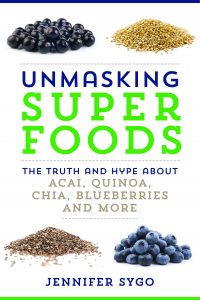 It’s not always easy to find a nutrition book that’s easy to read and backed by credible research. But Sygo does just that. In Unmasking Superfoods, Sygo separates the truth from the hype behind some of today’s superfoods such as acai, noni, quinoa and the increasingly popular coconut oil.
It’s not always easy to find a nutrition book that’s easy to read and backed by credible research. But Sygo does just that. In Unmasking Superfoods, Sygo separates the truth from the hype behind some of today’s superfoods such as acai, noni, quinoa and the increasingly popular coconut oil.
 From protein and probiotics to tea and cooking, we’ve got the scoop on the top 10 hottest trends for 2014.
From protein and probiotics to tea and cooking, we’ve got the scoop on the top 10 hottest trends for 2014.